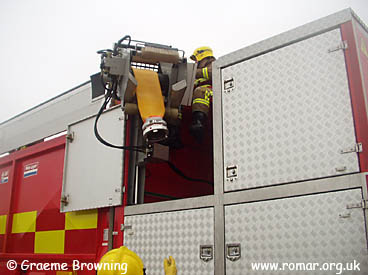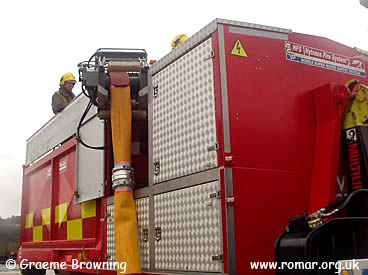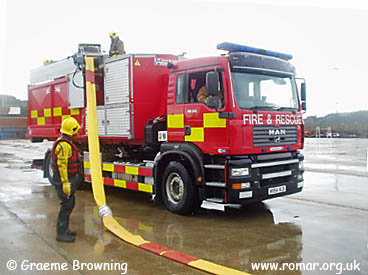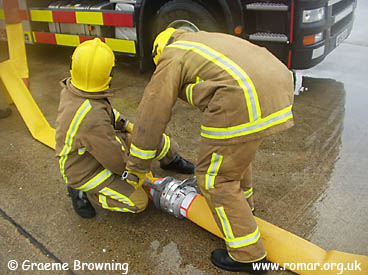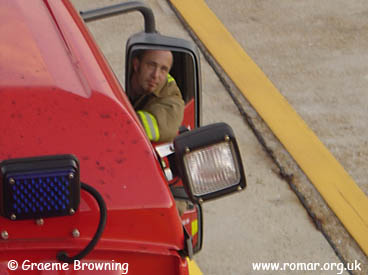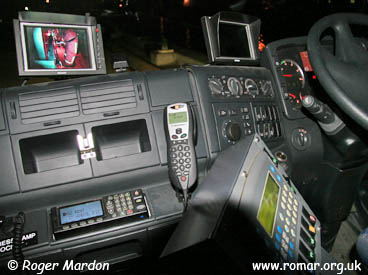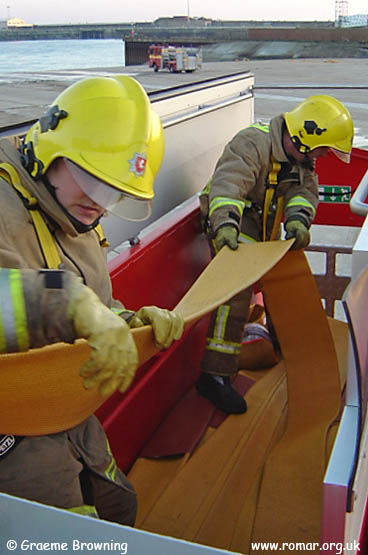

Fire service historian and author
Roger Mardon


www.romar.org.uk
© Copyright Roger Mardon
www.romar.org.uk
All rights reserved
Previous
Next
A short length of hose from the hose box is coupled to the line to be recovered and as the vehicle moves forward the hose is drawn up by the recovery unit and flaked into the hose box by the two crew members. The maximum recovery speed is 4mph. Before retrieval the hose line is broken at about every third coupling, depending on the ground conditions and gradient, to release the water in the line while making sure it will drain away and not collect in dips. The driver stops at each broken coupling while his assistant, who walks along the line, remakes the coupling. Each stop and start is preceded by a short blast on the road horn to warn the hose box operators of the change and so they can be ready to operate the HRU controls from within the box. Electronic eye sensors recognise the need to open and close the pressure rollers as hose couplings approach and pass through the unit. Any remaining water is drained from the hose as it is recovered.
The driver has a closed circuit television link to monitor the activities of the crew in the hose box and ensure their safety.
